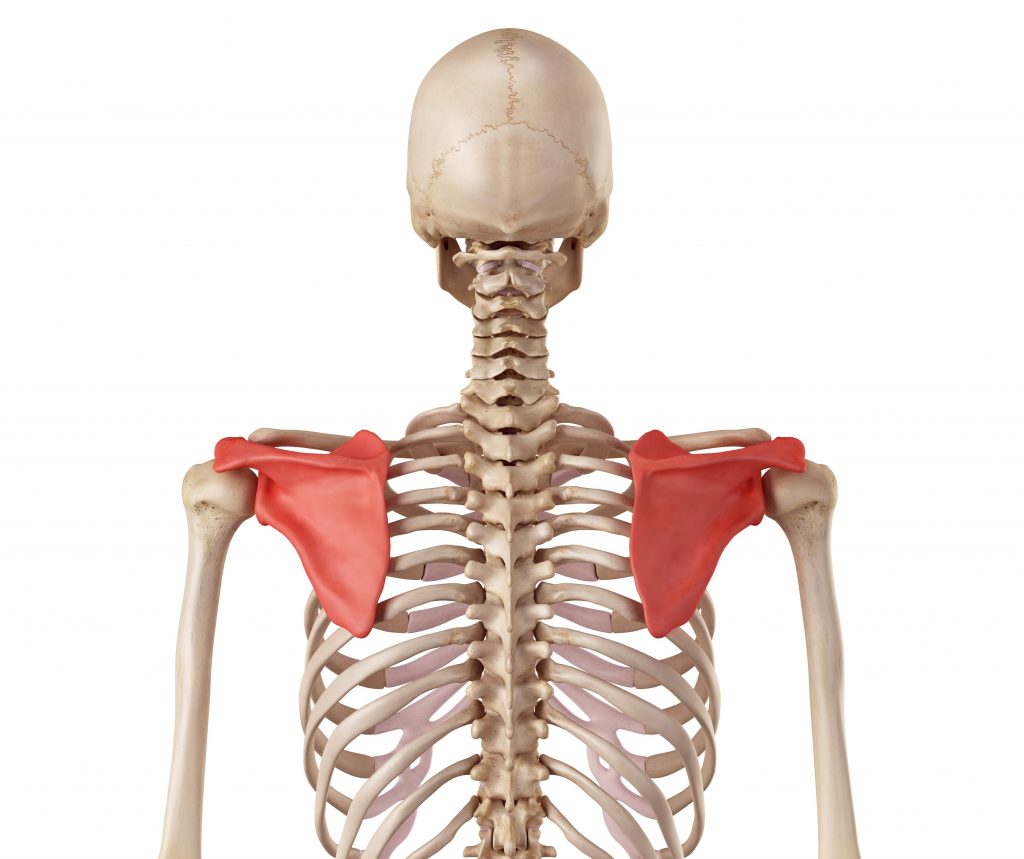Long Term treatment for Shoulder Pains, Stiffness, Nerve impingements etc include treating for Scapular Winging. We have put together a few activities that you can easily do at home.
Having complete control of that little triangular bone just behind your shoulders is an important part of completing daily movements. We often don’t realize its importance until we lose it.
If you’ve ever had trouble raising your arms over your head, brushing your teeth, or even supporting yourself when getting up from the floor, you may actually have a condition called “Scapular Winging” – a condition that affects the shoulder blades. Scapula is the anatomical term for the shoulder blade.

The shoulder blades usually rest flat against the back of the chest wall. Scapular winging occurs when a shoulder blade sticks out.
While the condition is rare, it’s usually painful and makes day-to-day activities, such as lifting grocery bags or brushing your teeth, difficult.
Scapular winging symptoms vary from person to person depending on the underlying cause as well as the muscles and nerves involved. Most people with scapular winging have a shoulder blade that sticks out. This can make sitting in a chair or wearing a backpack uncomfortable.
If the winged scapula is the result of nerve damage, it can cause weakness in the muscles of your neck, shoulders, and arms. That weakness can make lifting, pulling, and pushing heavy objects hard.
Scapular winging often affects your ability to raise your arm above your shoulder. It may also be associated with other symptoms, including:
Scapular winging is almost always caused by damage to one of three nerves that control muscles in your arms, back, and neck:
Injuries and surgeries can both cause damage to these nerves and muscles.
Scapular winging isn’t always preventable, but you may be able to reduce your risk by:
Recovering from scapular winging can take anywhere from a few months to several years, depending on the initial cause, treatment method, and nerves and muscles affected. Nonsurgical treatment options can start working almost immediately, while surgical treatment will likely take a few months to produce results.
While scapular winging can usually be improved, you may experience a permanent decreased range of motion in rare cases. Make sure to talk to your doctor as soon as you start experiencing symptoms to improve your chances of making a full recovery.
© All Rights Reserved OSR Sportsworks Consulting LLP